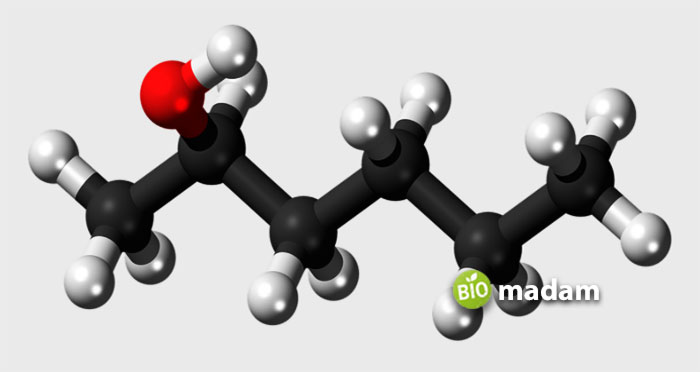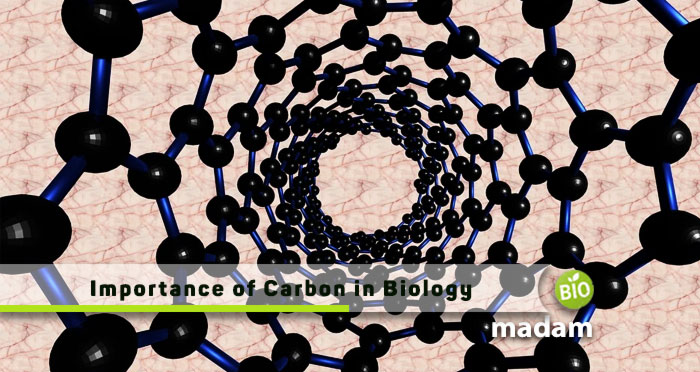On Earth, carbon is the fourth most ubiquitous element. The Carbon Cycle is the movement of carbon through the land, ocean, and atmosphere. The global carbon cycle is separated into two cycles. Those cycles are geological, biological, and physical.
Carbon has been found in nonliving forms, such as CO2, carbonate rocks, coal, petroleum, natural gas, and dead biological stuff. Photosynthesis converts CO2 into organic matter in plants and algae.
Carbon is required for life on Earth. This is partly due to carbon’s capacity to create bonds with other atoms. It allows biomolecules like DNA and RNA to take on many forms and functions. Organisms seek carbon molecules, which drive intricate carbon cycles in all living systems.
An organism can use organic (carbon-containing) molecules. Which are taken in from the environment for?
Energy: Releasing energy from carbon molecules can power many biological functions.
Reproduction: Carbon is transformed into essential proteins. It is for the organism to survive and grow.
What is Carbon? Carbon is a widely dispersed chemical element. It forms organic compounds when mixed with hydrogen, oxygen, etc. The atomic no. of carbon is 6.

Carbon has found in all living things; the human body contains around 18% carbon. The Sun’s energy has stored in the sugar molecule’s chemical bonds. Anabolism produces complex chemicals such as lipids, proteins, carbs, and nucleic acid. It produces simpler ones and uses photosynthesis energy.
Catabolism is the oxidative breakdown of organic molecules. It releases stored energy like water and carbon dioxide. The biological carbon cycle is the continuous production and breakdown of carbon dioxide.
Importance of Carbon in Biology
Carbon is vital in biology since life would not exist without it. Carbon has required for all living things to survive, develop, and reproduce. Carbon compounds are also found in many everyday items. Notably, the presence of carbon distinguishes organic from inorganic.
1. Role of carbon in the Human Body
The human body does not contain carbon in its purest form but rather in the form of compounds. Millions of carbon atoms make up the thousands of molecules in every cell. Which account for around 18% of the body’s total mass?
Proteins, Carbohydrates, and lipids are all made from carbon. It is a fundamental building block. Carbon also plays a critical regulatory function within our bodies. Carbon-containing gases and liquids can also affect the human body.
2. Role of carbon in Photosynthesis and Respiration
During photosynthesis, carbon dioxide has used as a source of carbon. Plants rely on it for the production of essential organic molecules. Plants on the ground get the carbon they need from the atmosphere.
When the carbon gets inside the plant’s cells, it finally reaches the chloroplasts. Leaf color has derived from these pigments, which also absorb light energy from the Sun.
The series of events that follow may be summarized in a few sentences. Using the Sun’s energy, water and carbon dioxide have transformed into simple sugars. Oxygen is now available to other species for respiration.
- Photosynthesis: 6CO2 + 6H2O → C6H12O6+ 6O2
- Cellular Respiration: C6H12O6 + 6O2 → 6CO2 + 6H2O
Photosynthesis produces the glucose required for cellular respiration. The glucose is subsequently converted back to CO2 for photosynthesis. In cellular respiration, oxygen has mixed with hydrogen to generate water. Unlike fermentation, cellular respiration uses oxygen and emits CO2. We and most other species use the released oxygen for cellular respiration.
We take in oxygen, which has delivered to all our cells via our blood. Oxygen is required for cellular respiration. Optimal cellular respiration requires oxygen. Without oxygen, ATP production has reduced.
The carbon cycle includes cellular respiration and photosynthesis. The carbon cycle is the biosphere’s method of recycling carbon. Photosynthesis removes CO2 from the atmosphere while cellular respiration releases it. This is an exchange of CO2 and O2 during photosynthesis and cellular respiration. It helps stabilize atmospheric CO2 and O2.
3. Role of carbon in Inorganic Compounds
Inorganic compounds are those compounds that do not contain carbon and hydrogen atoms. But few inorganic substances have carbon atoms. One of the most common examples is carbon dioxide (CO2).
Carbon (Co2) is used in many products. These are Rubber, plastics, fuel, natural gas, etc. Carbon (Co2) is found in coal, diamonds, and graphite. It gives pencil lead its black color. A fire produces black soot, which is a type of carbon (Co2).
Sources of Carbon

A source is a process or area that produces the majority of the carbon dioxide in the atmosphere. There are many ways carbon dioxide has been released into the atmosphere. It includes respiration, decomposition, forest fires, and volcanic eruptions. Human activities are such as burning fossil fuels, clearing forests, and making cement. These all contribute to the buildup of carbon dioxide in the atmosphere.
- Weathering of Carbonate Rocks
- Respiration and decomposition
- Fossil Fuels and Forests are burned.
Effects of Carbon
About 55% of the extra carbon humans have pumped into the atmosphere. It has been absorbed by land plants and the ocean, while the rest has remained in the atmosphere. The land and seas absorb most of the extra carbon dioxide over time. But it might persist in the atmosphere for thousands of years.
Each reservoir is affected by changes in the carbon cycle. Besides warming the globe, excess carbon dioxide and little amount of carbon monoxide are in the atmosphere. It encourages plant growth on the ground. Ocean acidification is exacerbated by an increase in carbon dioxide concentrations. It is putting marine life at risk.
Seasons and human activity, such as carbon dioxide emissions, are the same. Alter the worldwide concentration of carbon in the atmosphere. Environmental scientists and policymakers are studying. These are issues to find ways to mitigate. It is about the effects of pollution on the atmosphere.
Summary
To answer the question, “why is carbon so important in biology?” we have come to this conclusion; we’ve learned a lot about this piece throughout the process. The first and most obvious reason is that without carbon, we would all die.

It is crucial to life as we know it forms the basis of every organic compound. When this element is present or absent, a substance can be organic or inorganic.
If the question stumps you, “why is carbon so important in biology?” there are several reasons to consider. Without it, our existence will never be complete. The fourth most prevalent element on Earth is carbon and cosmos. There are more carbon-containing molecules than those without.
It is something for which we should be grateful. This is an interesting fact. Carbon is essential to our existence. Carbon is the main constituent of the building blocks of life. It is found in many of the everyday products to build, develop, and produce energy. Must and beneficial for all living organisms.

Hello, I would like to introduce myself to you! I am Chelsea Rogers, an experienced blog writer for science articles, holding an MPhil degree. My enthusiasm to grab the best knowledge, let it relate to botany, zoology, or any other science branch. Read my articles & let me wait for your words s in the comment section.

